Private promissory notes in small denominations had their hey-day in New South Wales from c.1812-1814 and Tasmania from c.1822-1826. They are generally referred to as “Promissory notes”, but the notes of those times really divide into two general categories. The following definitions are given with the index to notes in the Dixson and Mitchell Library Collections, State Library of New South Wales, Sydney.
There were many different issuers for amounts generally ranging from threepence to one pound.
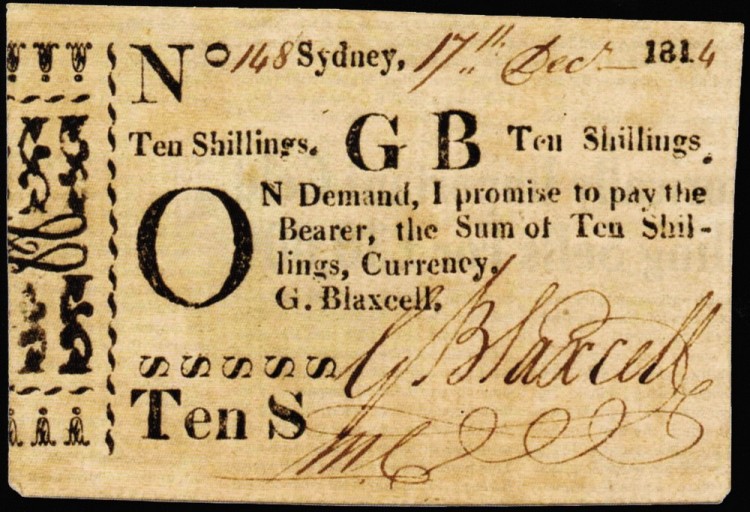
CURRENCY NOTE
“A private bill issued by a person or a firm (not a bank), payable on demand, not necessarily in specie, and with an explicitly stated (printed or engraved) regular denomination. It is a special type of Promissory note.”
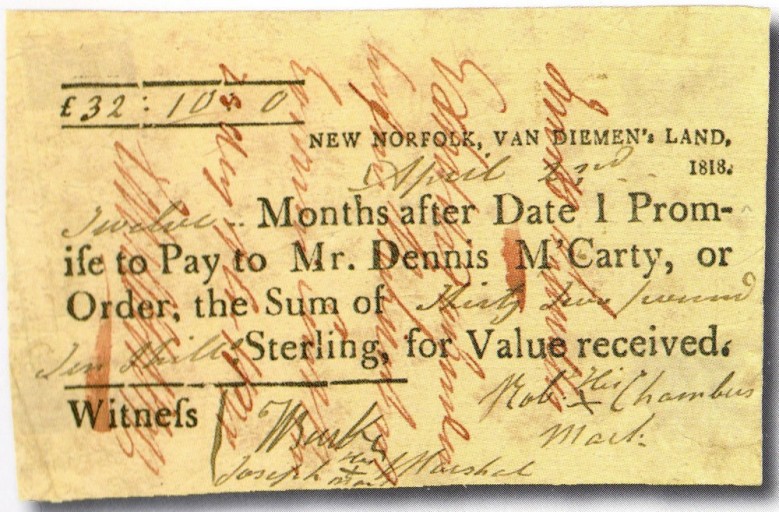
PROMISSORY NOTE
“A private bill in some such form as “I promise to pay”, not necessarily payable on demand, drawn on the issuer or his agent or bank. Applied here only to those without a definite printed denomination, in which case it is called a currency note.”
Further reading; Australian Colonial Currency and Promissory Notes 2nd. ed. 2012 by Michael P. Vort-Ronald, 136 pp. RRP $36, post $4. Email Mick for more information.
Other forms of promissory notes were common in the first half of the 1900s, which could also be divided into two categories.
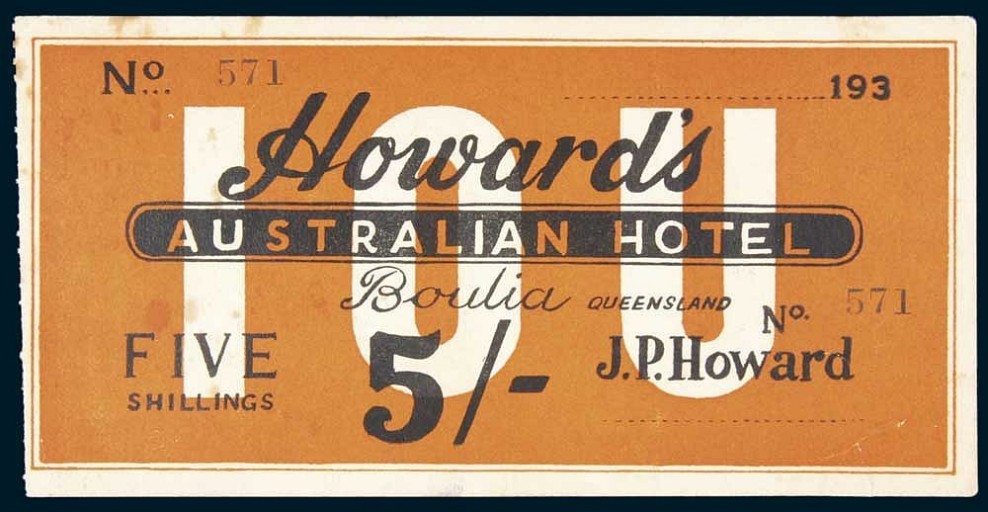
SHINPLASTER
A promissory note from an individual or company, promising to pay a stated amount on demand. So-called because they were sometimes printed on very frail paper that could disintegrate with a lot of wear, thus preventing the issuer from honouring it.
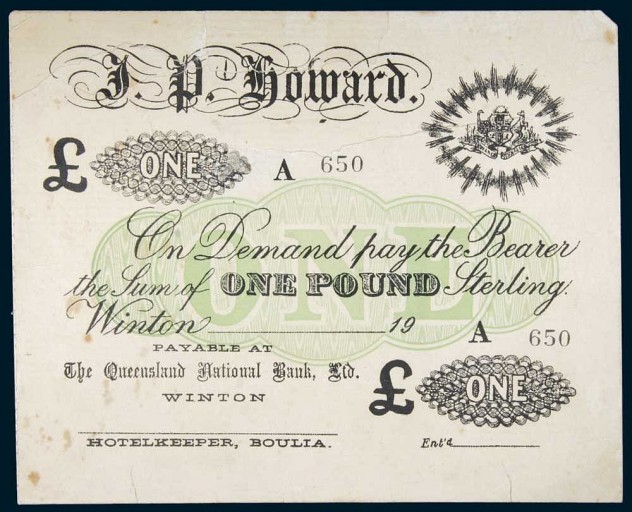
CALABASH
Similar to a Shinplaster, but a promissory note payable on demand through a bank. The note illustrated is payable through the Queensland National Bank Ltd. at Winton, Queensland.
Further reading; Australian Shinplaster and Calabash Notes, 2nd. ed. 2007 by Michael P. Vort-Ronald, 132pp. RRP $25 post $4, and
Australian Miscellaneous and Political Propaganda Notes, 2013, by Michael P. Vort-Ronald, 150pp, RRP $36, post $4. Email Mick for more information.
Another later form of promissory note was similar to a post-dated cheque in that it promised to pay a certain sum of money for value received (often for 3 months from the date of issue). It was held until the due date and then presented for payment through the issuer’s bank.
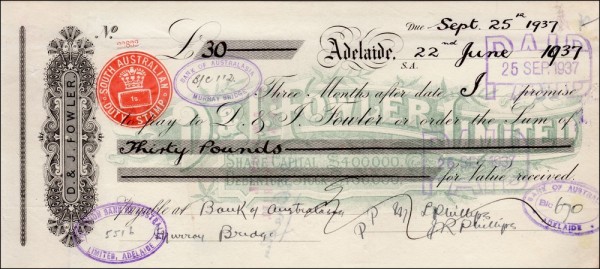
A new book published by Vort-Ronald in September 2015 describes this category of promissory note from 1906 to 1974 and the impressed duty stamps on them. It is A4 size with 88 pp. titled South Australian Promissory Notes 1906-1974 with a RRP of $24 plus $4 post. A previous book by him on such notes in the 1800s is out of print. Email Mick for more information.
Acknowledgement; Noble Numismatics for permission to use images from their auction catalogues.
